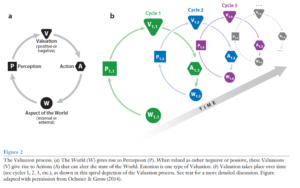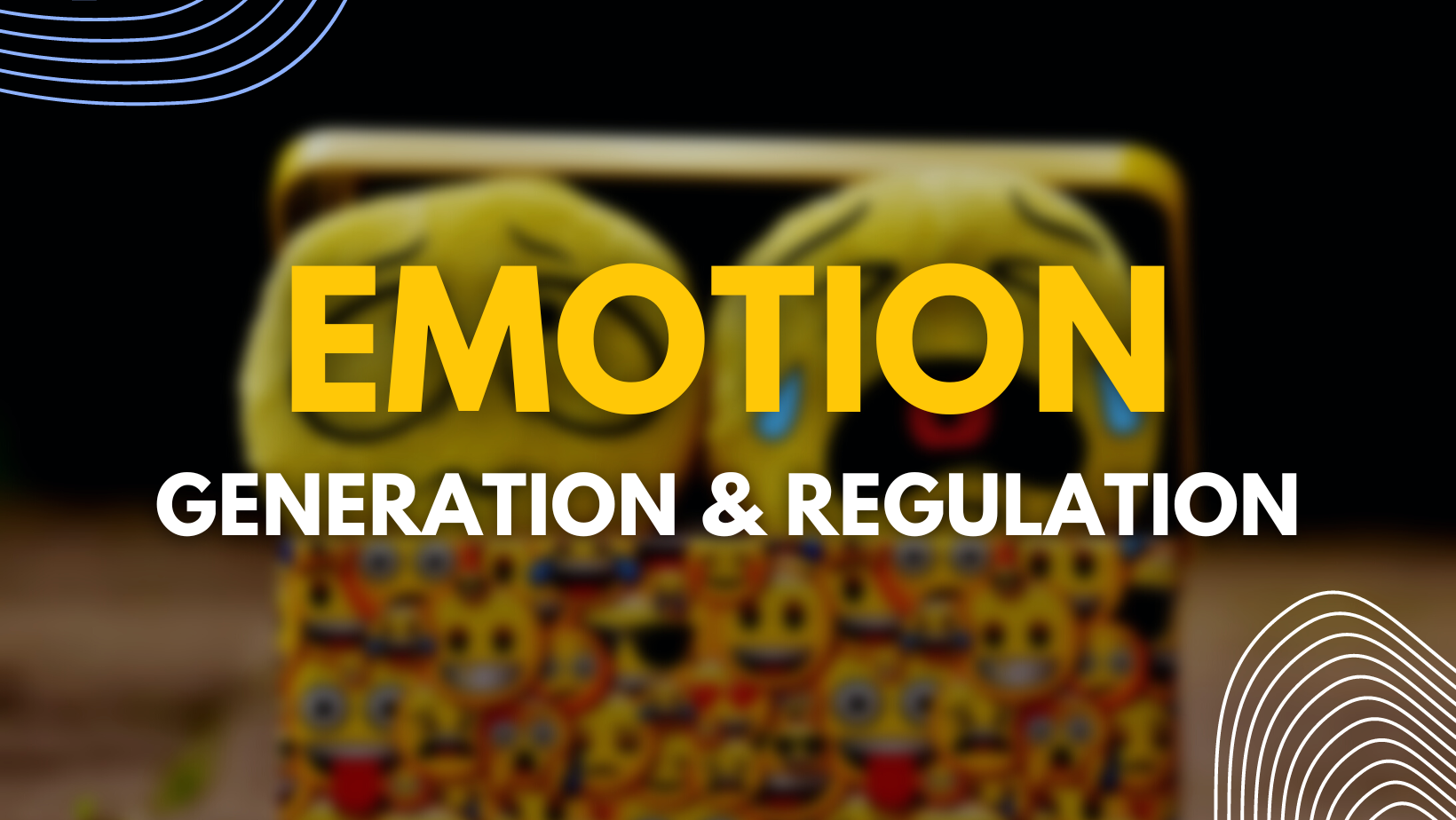Emotion: Generation and Regulation
An emotion is a natural instinctive state of mind deriving from one’s circumstances, mood, or relationships with others. A fundamental difference between feelings and emotions is that feelings are experienced consciously, while emotions manifest either consciously or subconsciously.
There are four kinds of basic emotions: happiness, sadness, fear, and anger, which are differentially associated with three core affects: reward (happiness), punishment (sadness), and stress (fear and anger)¹.
To know more on Emotion generation and the regulation, let us look at The Emotion Generation Valuation system ² :
Emotion generation and emotion regulation both operate via systems that share basic features, including the activation of goals. However, the target of these goals differs. The target of emotion generation can be a wide array of internal and/or external outcomes, whereas the target of emotion regulation is always to induce a change in the emotion-generation system (Gross et al. 2011a).
Emotional problems are related to dysregulation.
The subjective value that organisms give to objects strongly determines their responses to these objects – The Emotion Generation Valuation system:
The World (W) gives rise to Perception (P). When valued as either negative or positive, these Valuations (V) give rise to Actions (A) that can alter the state of the World. Emotion is one type of Valuation.
Let us take for example: A driver cuts you while driving from work (World). You may Perceive this as an act of disrespect. The Valance attributed would therefore be negative. That would in turn lead to an Action of some sort. Thereby serving as an experience for future such events.

Figure taken from: Sheppes, Gal & Suri, Gaurav & Gross, James. (2015). Emotion Regulation and Psychopathology. Annual review of clinical psychology. 11. 10.1146/annurev-clinpsy-032814-112739.
Emotion Regulation (ER)² : Emotion regulation begins when the evoked emotional response tendencies (i.e., World) activate a second-order emotion-regulation Valuation system. Perception involves representing in working memory the current emotional state together with a conflicting desired state. Weighting (Valuation) of the current emotional state, the desired regulated state, and their discrepancy is computed. Given the large discrepancy, a regulatory response that involves cognitively changing the emotional appraisal is formed (Action).
Importantly, in this case the target of the regulatory Action is the Valuation process of the emotional first-order Valuation system. That is, the reappraisal (e.g., thinking that the other driver had a bad day) is competing with the original appraisal (that the other driver was being disrespectful).

Figure taken from: Sheppes, Gal & Suri, Gaurav & Gross, James. (2015). Emotion Regulation and Psychopathology. Annual review of clinical psychology. 11. 10.1146/annurev-clinpsy-032814-112739.
There have been at least five families of emotion regulation processes: situation selection, situation modification, attentional deployment, cognitive change, and response modulation .
Emotional control and regulation is taking any action that alters the intensity of an emotional experience. It doesn’t mean suppressing or avoiding emotions. With emotional regulation skills, you can influence which emotions you have as well as how you express them.
Here are some strategies which might be helpful when you are faced with an emotional challenge:
- Identify and reduce triggers consciously
- Name what you feel
- Consider the story you are telling yourself
- Engage in positive self-talk
- Make a choice about how to respond
- Create space – take a pause and let the moment between a trigger and response turn to slow motion.
- Practice attention shifting and mindfulness based exercises during such times.
References:






No Comments